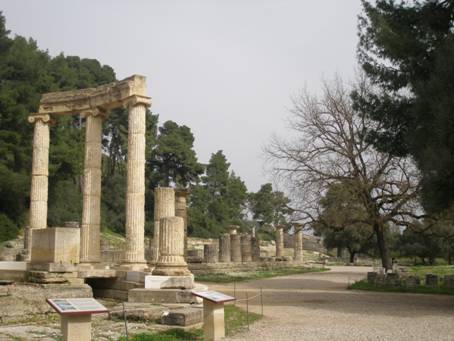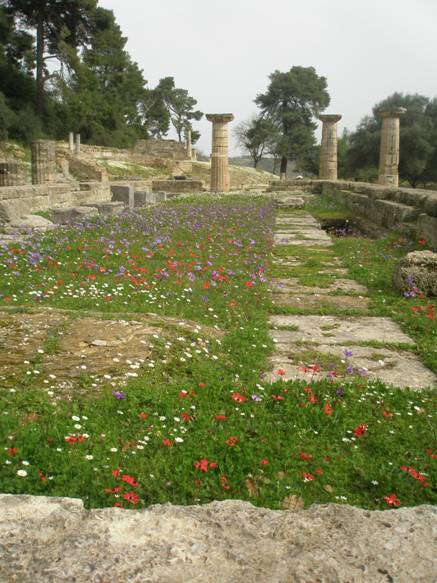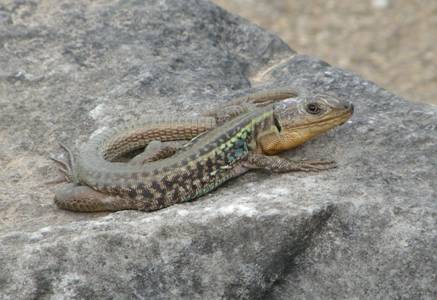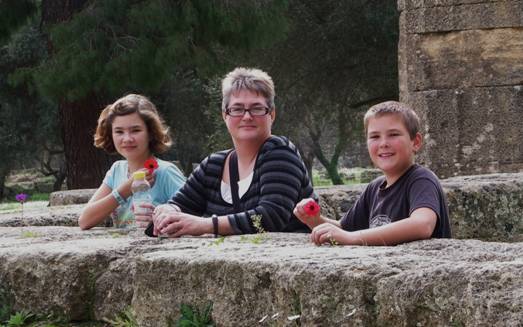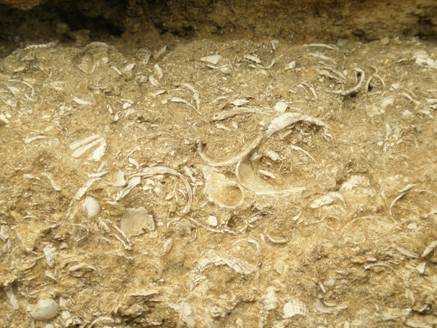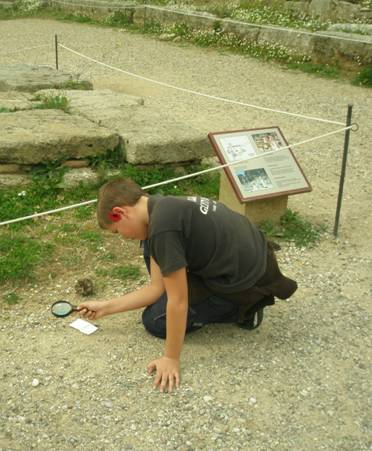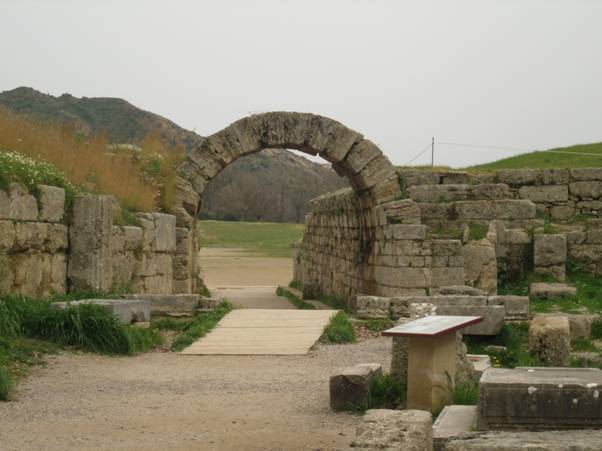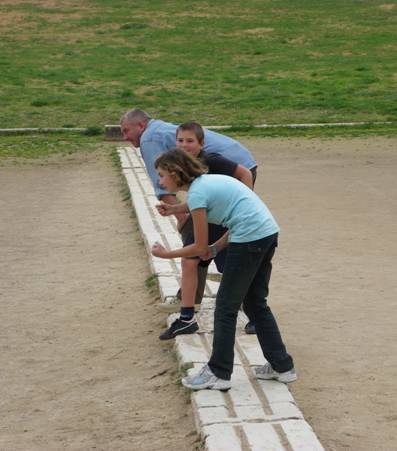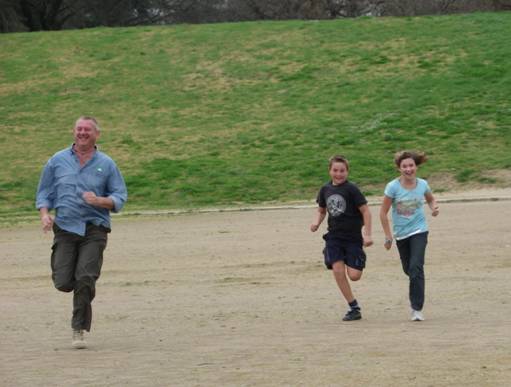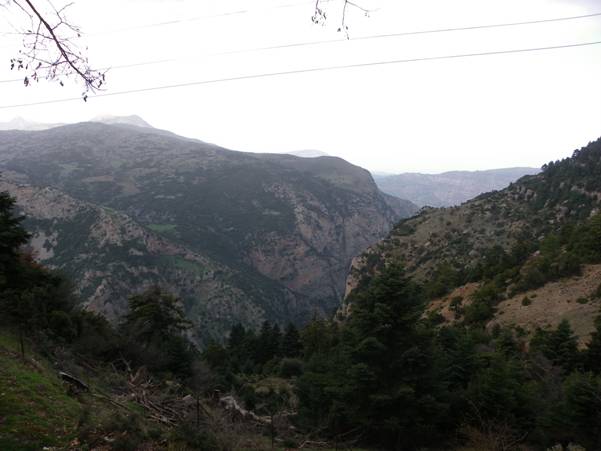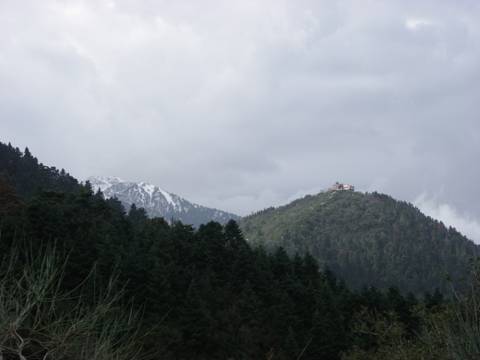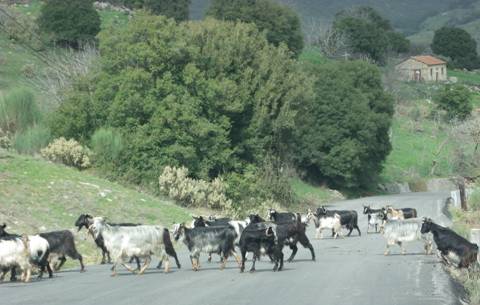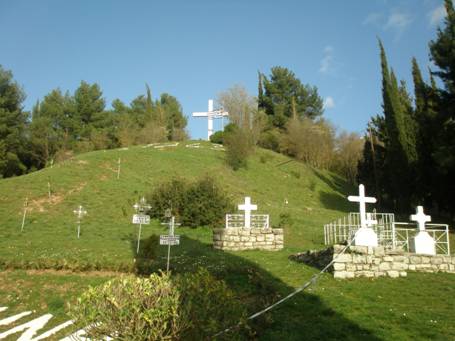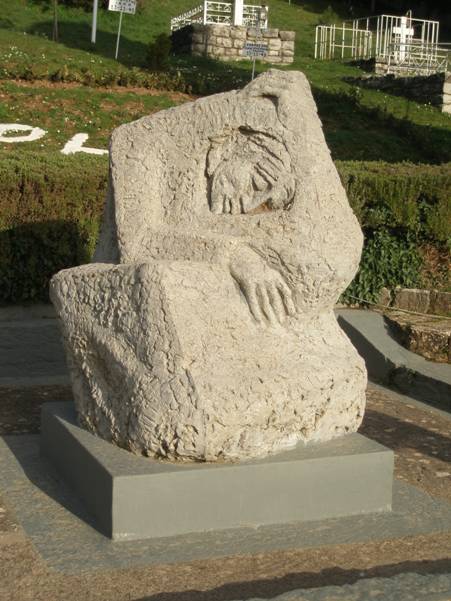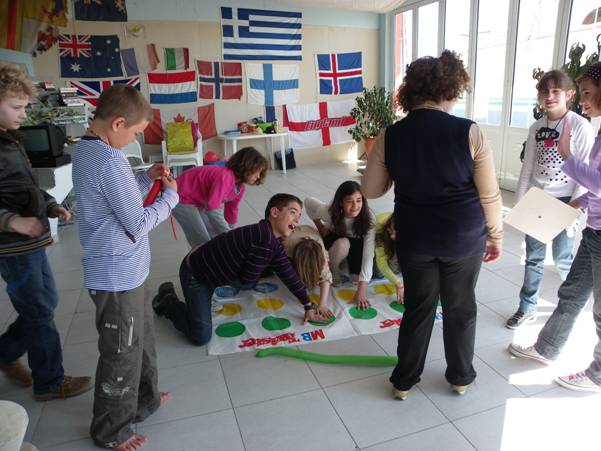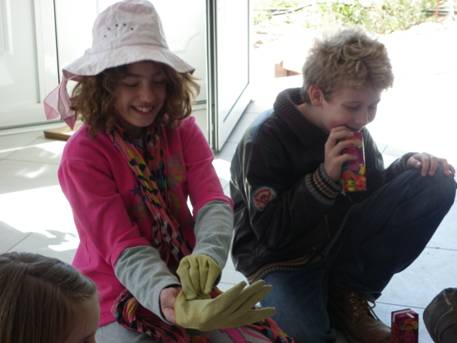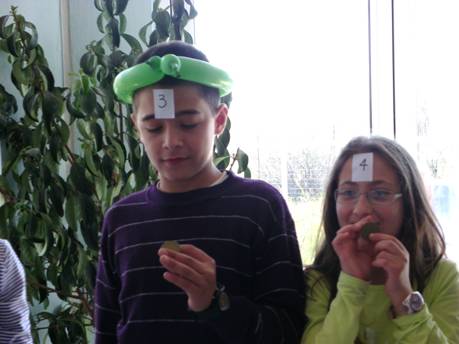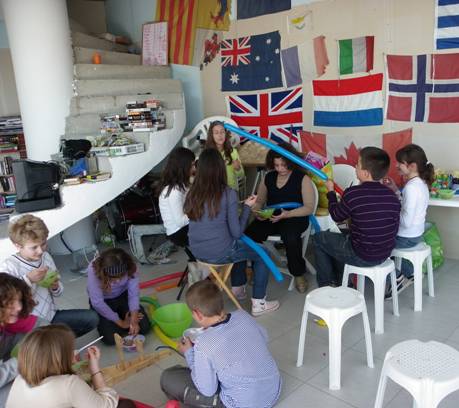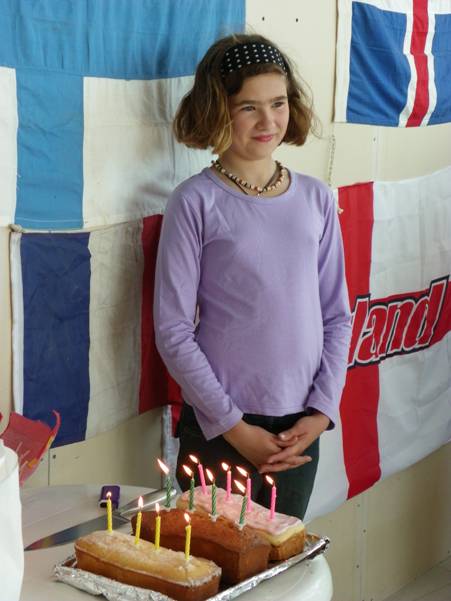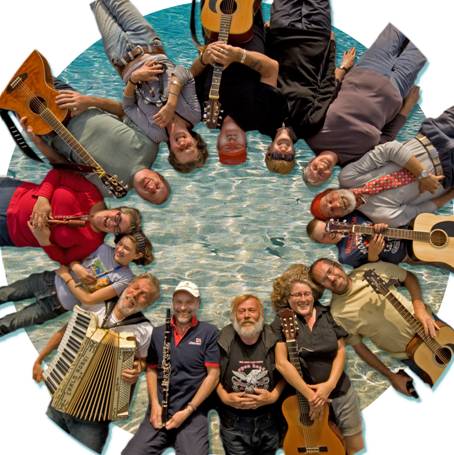Ancient Olympia, Kalavryta and Plan U

|
Ancient Olympia We
had been doing ‘The Olympics’ for boat school, so a visit to Ancient Olympia on
the Peloponnese – site of the original Olympic Games – fitted in perfectly.
Ancient Olympia shouldn’t be confused with Mount Olympus where Zeus and Hera and
the other Greek Gods hung out – that Olympus is in northern Greece, near
Thessaloniki.
We had a warm but overcast day and the site to
ourselves.
Spot the Ionic Capitals (scroll-like column
tops). While it was still winter in Messolonghi, spring had definitely arrived in Olympia and there were carpets of wild flowers, trees in blossom, and lizards sunbathing.
Wild flowers carpeted the temples and treasuries.
Sunbathing lizard.
Some of the other wildlife David caught on camera among the
stones. Limestone was used for much of the stonework, and weathering over the
centuries had exposed the shells.
Shells visible in the limestone. Lighting the Olympic flame Having seen the Olympic flame for the Winter Olympics in Vancouver 2010 being carried through Messolonghi, we tracked down the place in Olympia where the flame is traditionally lit for each set of modern Olympic games.
The place where the Olympic flame is lit using the power of the
sun. We went armed with our magnifying glass and some paper, but it was just a tad too hazy to light our own flame.
Bryn attempting to kindle an Olympic flame. The Olympic running track Our favourite part of the site was the Olympic running track. Originally the athletes would have emerged through a tunnel onto the track and the archway at the beginning of the tunnel is still standing.
The tunnel leading to the Olympic running
track. A set of stone slabs – with grooves for the athletes feet – were the original starting blocks. The track could do with a bit of Roundup to get rid of the tufts of grass, but is still quite smooth and flat. The spectators (all men) would have sat on the grassy banks lining the track (but would have suffered from ants in the pants judging by the number of anthills we saw).
Team Smith (Wales) on their marks on the starting block for the
sprint.
Daddy won the gold for Wales. In the original games, the athletes – only men – competed naked. Women
weren’t even allowed to watch – any woman caught watching was sentenced to
death! Apparently one woman disguised herself as a coach to sneak in to watch
her son compete. After she was caught, everyone entering the games – athletes,
coaches and spectators – had to strip off to prove that they were
male. Kalavryta Plan A was to take
the rack-and-pinion train from Diakopto up to the ski resort of Kalavryta, but
we just missed the train so drove up into the Helmos mountains instead. The
scenery was breathtaking.
Up in the Helmos
mountains of the Peloponnese. We passed hilltop
monasteries, popped into a ski shop to examine ski boots, skis and snowboards
(as part of the Olympic project), waited while goats crossed the road, and
stopped at a roadside stall to buy honey. There were 5 or 6 different varieties
of honey to choose from (e.g. thyme, pine, flower, eucalyptus, mixed...) – the
guy insisted that we tasted all of them; we bought 2 jars and drove on under the
influence of honey.
Hilltop
monastery.
Beware – goats
crossing. Kalavryta
was the site of a massacre during WWII. On 13 December 1943, in response to the
killing of German soldiers by the Greek resistance, the German army slaughtered
the male population and burned the town to the ground. All the elderly, women
and children were held in the town's school, while all the men and boys older
than about 14 years were ordered to a field just outside the village. There, the
German troops machine-gunned down 499 of them, leaving just 12 survivors. The
women and children escaped from the school while the town was set ablaze. They
struggled to dig graves to bury their dead as the ground was frozen solid, and
spent the next few days trying to stop dogs and vultures eating the bodies. The
museum is housed in the (now rebuilt) school house. I was useless and
cried my eyes out.
The site in Kalavryta where the men and boys were slaughtered.
The memoriam. We also found the tiny monastery at Agia Lavra which is famous for being
the place where Bishop Germanos of Patras raised the Greek flag on
25th March 1821 and launched the Greek War of Independence against
the Turks.
The monastery at Agia Lavra (no it wasn’t suffering from subsidence –
this is just a particularly bad photo – must still have been under the influence
of honey). We still wanted to do
the train ride, so Plan B was to take the train the next day, from Kalavryta
down to Diakopto at sea level and back up again. We found a small hotel and
stayed overnight and were waiting at Kalavryta
station for the 09:00 train the next morning. When the train hadn’t arrived by
09:30 we asked in the newspaper kiosk and found out that the Greek public
service workers were on strike so the train would not be running (typical!).
The Cave Lakes at Kastria We found some caves
at Kastria to do instead, and got a fix of very impressive stalactites,
stalagmites and dams (sorry, no photography was allowed). The cave is an old
subterranean river that has been explored to a distance of 1980 metres, with
access for visitors up to 500 metres via bridges and walkways. In winter, melt
water transforms the cave into a cascade of waterfalls and small lakes.
Apparently, human and animal fossils (including that of a hippo) were found in
the lower part of the cave system. According
to legend, these caves were the refuge for three of the daughters of the King of
Tirynth (namely Lyssippi, Ifinoy and Ifianassa – never heard of any
of them). The sisters bragged that they were more beautiful than the
Goddess Hera and refused to worship the God Dionysus. To punish them, Hera sent
them mad and made them thing that they were heifers running wild on the
mountains and meadows of the Peloponnese, infecting local women with
the craze of infanticide. They eventually arrived at the caves at Kastria, where
they were found by Melambodas (never heard of him either) who cured them.
Beth’s birthday Bethany invited a crowd of school friends to help her celebrate her
12th birthday. They played Twister and the
eating-chocolate-with-a-knife-and-fork-while-dressed-up game, fought with
balloon swords, tooted Happy
Birthday, passed the parcel, and consumed large quantities of hot dogs,
popcorn, crisps, lollipops, jelly, ice-cream, juice, Coke and Sprite.
Twister
– Greek style.
The eating-chocolate-with-a-knife-and-fork-while-dressed-up
game.
Tooting Happy
Birthday.
Making balloon swords while eating jelly and
ice-cream. Everyone in the marina joined us for Happy Birthday in Welsh, English, Greek, French and German, and the lighting of the candles on the three cakes (I have to say that Bryn’s ginger cake was the best – I must have lost my touch with lemon drizzle and Italian yogurt cake!).
Beth and the birthday cakes. We kept the BBQ going for the rest of the day, through the final three
matches of the Rugby 6 Nations and into a bit of a leaving
party. The Messolonghi Marina Bar ‘n’ BBQ Balladeers
(MMB’n’BB) Music sessions over the past month have focussed on capturing the numbers
that we’ve been working on all winter. Paul has been recording and producing the
music, the photography group came up with the photo for the CD and the cover,
and Svein produced and printed the CDs.
We survived Messolonghi Marina Winter
2009/2010! The U Plan The plan this season is
to do a U turn and head west. While we would have liked to go down the Red Sea
and across to India, the fact that Yemen is now unstable as well as the ongoing
problem with pirates off Somalia means that we don't think that it is safe
getting out of the bottom end of the Red Sea and don’t fancy going into the Red
Sea to have to come back out again. No, in reality we probably haven't done all
that we wanted to this end of the Med – there are places we want to see in the
Aegean and Turkey, but we don't want to end up stuck in the Med for another
winter and the further east we go now, the longer it will take us to get out.
Not being able to do the Vasco de Gama rally has left us feeling a bit like
we're wandering aimlessly and we want a 'meaty' plan to get our teeth into and a
medium-term 'somewhere' to aim for. So – from the Ionian we are planning to head
for southern Sicily, then Malta, Tunisia, Sardinia (to Cagliari to catch up with
folks there), the Balearics, the south coast of Mediterranean Spain and
Gibraltar. That little lot will take us the whole of the summer. After that the
possibilities are Atlantic Spain and Morocco, the Canaries, the Cape Verde
Islands, and maybe even Senegal and the Gambia. __________ Information from ESET NOD32 Antivirus, version of virus signature database 4979 (20100328) __________ The message was checked by ESET NOD32 Antivirus. http://www.eset.com |
